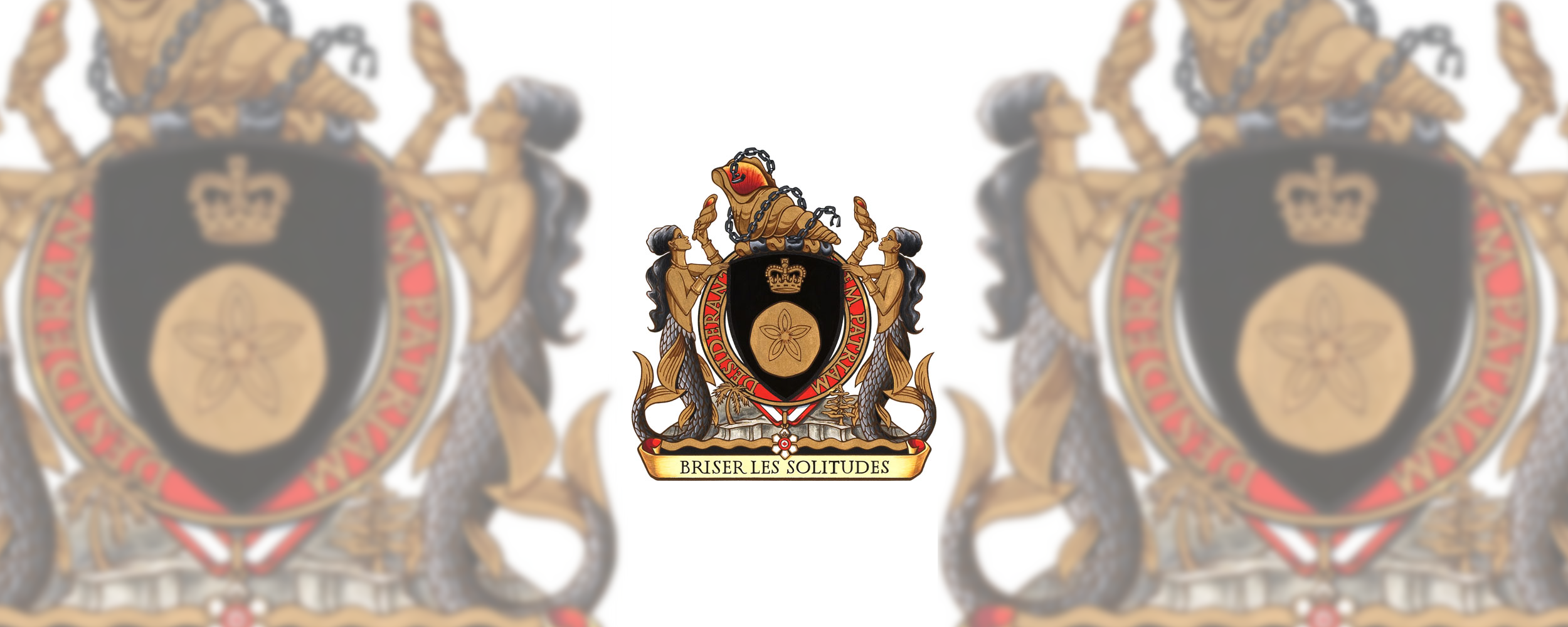
Coat of Arms, Jean-Daniel Lafond
Jean-Daniel LAFOND
Ottawa, Ontario
Grant of Arms
March 20, 2008
Vol. V, p. 264
Blazon
Arms
Azure a banyan tree eradicated Or;
Crest
Issuant from a zoetrope Azure, a full moon Or its dexter eye embedded with a camera lens Azure;
Supporters
Two horse-doves Azure and Or, each supporting a walking stick and standing on a grassy mount Or;
Motto
L’HUMANITÉ POUR PATRIE.
Symbolism
Arms
The background of the shield is blue with a gold banyan tree in the centre. The banyan is a lush tree with aerial roots that are sent down into the earth to form secondary trunks. The banyan begins as an epiphyte on a host tree, where its seeds are dropped by a fruit-eating bird. It sends out its aerial roots from its branches, which develop into full trunks once they reach the earth, allowing the tree to spread over a vast area. It belongs to the Ficus genus of the Moraceae family. It is related to the fig tree and can develop into giant trees covering several hectares. Originally from India, Pakistan and Sri Lanka, it has also been imported into other regions of the world. The first banyan tree in the United States was planted by Thomas Alva Edison in Fort Myers, Florida. The largest banyan tree is reported to be in Pune, India, with a circumference measuring 800 metres. For Mr. Lafond, the banyan symbolizes the very essence of man, who must adapt to, develop within and put down roots in his environment. It is also the symbol of work and culture, perseverance, energy and hope.
Crest
The figure atop the crest consists of a magic lantern and a moon. Magic lanterns are ancient toys that, over time, inspired the thought and technical progress that led to the invention of film in the late 19th century. For Mr. Lafond, the magic lantern represents all forms of cinematography. It also symbolizes light as a source of inspiration and premise for knowledge and as the ultimate weapon against obscurity and ignorance. This light is the source of knowledge and impetus to the philosophical approach used by Plato in his allegory of the cave (The Republic, Book VII). The magic lantern evokes the work of the filmmaker who transposes his perception of reality into his films. It suggests that everyone perceives the world differently depending on his or her culture, history and interests. The moon charged with a camera lens evokes a well-known image from the film Voyage dans la lune (1902), a veritable masterpiece of photographic illusions and technical innovations by French filmmaker George Méliès (1861-1938). “Visionary director, special effects genius, Méliès defies the imagination by using multiple technical effects, ranging from optical illusions to double exposures, effects editing and colour effects, camera stops and prestidigitation. He’s done it all. But George Méliès did not just invent film entertainment and cinematic tricks; he was also a man of the theatre, an artist, painter, cartoonist, magician, writer, actor, technician, director, and creator of the first film studio.”
Supporters
The horse-doves consist of a hybrid between a horse and a dove. For Mr. Lafond, they represent his French origins (the horse is an animal from his childhood) and his personal aspirations (the dove symbolizes peace). They are each holding a stick. For Mr. Lafond, these two sticks represent the supporters of thought and the tools of knowledge that a philosopher needs in his quest for truth and knowledge. They refer to Socrates walking in the dark, a stick in his left hand to ensure safe footing and a lantern in his right hand to light the way.
Motto
L’HUMANITÉ POUR PATRIE, meaning “humanity for one’s homeland.”
For more details, see the Public Register of Arms, Flags and Badges of the Canadian Heraldic Authority →

